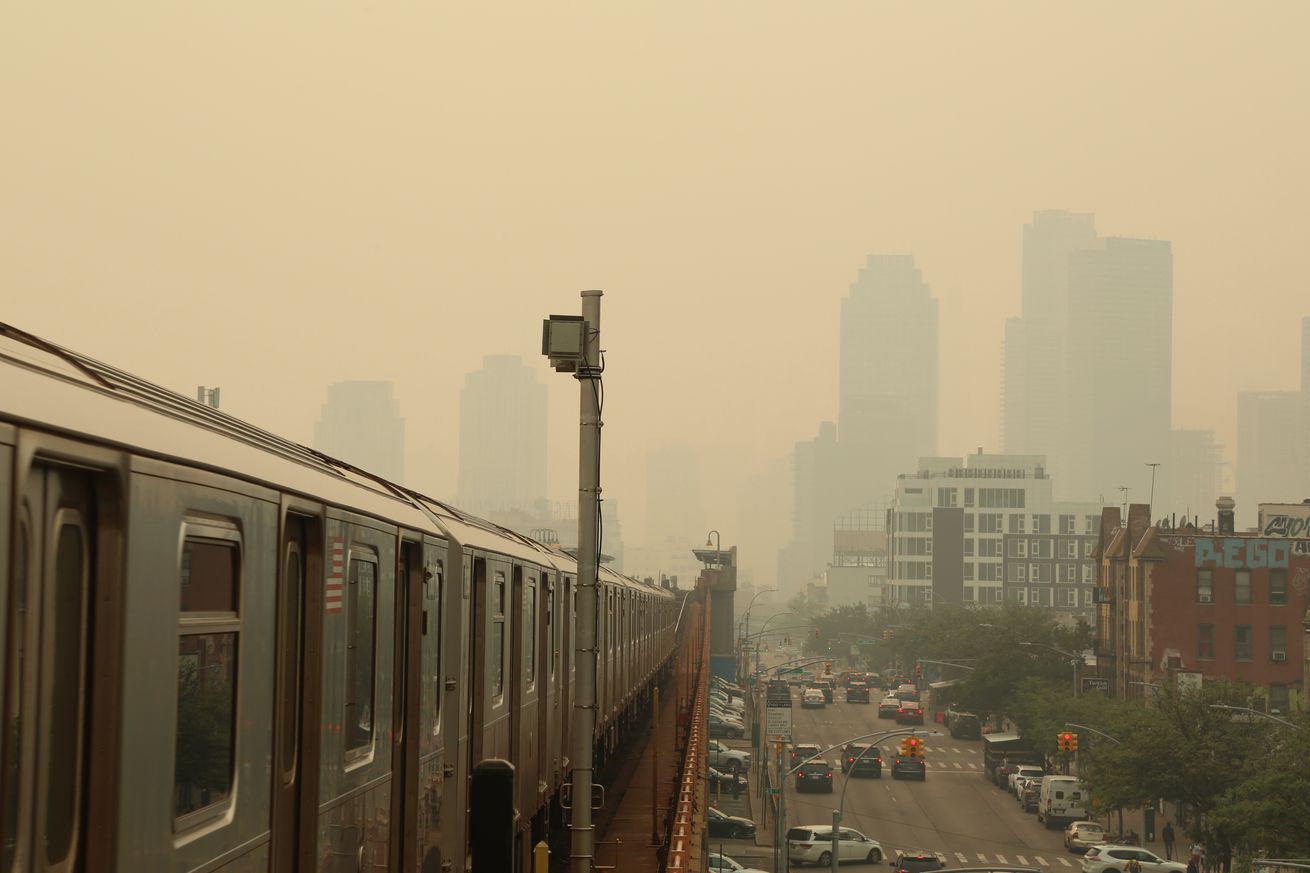
The US just had its worst day of wildfire smoke on record
When it comes to pollution from wildfire smoke, Wednesday, June 7th, 2023, was by far the worst day on record for the average American. A thick haze of smoke swept in from wildfires in Canada, blanketing much of the Northeast with record-shattering levels of harmful particulate pollution.
The Verge was on the phone with Stanford associate professor Marshall Burke when he got the results of his team’s analysis via Slack. “Jesus,” he says — audibly surprised, even though he expected the numbers to be bad. “It’s really remarkable. The number is honestly pretty shocking.”
“It’s really remarkable. The number is honestly pretty shocking.”
According to the initial analysis by his team at Stanford’s Environmental Change and Human Outcomes Lab, the average person in the US was exposed to 27.5 micrograms of small particulate pollution from smoke. That’s compared to 17.5 micrograms during California’s epically bad wildfires in 2020.
Those figures represent an average for Americans. Some people in the worst-hit areas were exposed to as much as 500 micrograms, an “insanely high level,” according to Burke. New York City and parts of upstate New York were the hardest hit yesterday.
Stanford’s satellite data, which shows the researchers where smoke plumes have spread, goes back to 2006. But it’s unlikely that any event before then was much worse since this analysis is based on both population and the severity of the smoke. The population has grown, and wildfires have become more uncontrollable since then.
The research team combines satellite data with readings from pollution monitors on the ground. Then, they can overlay estimates of smoke pollution for the contiguous US with population data. The western US typically has to cope with more wildfire smoke than the Northeast. But there are a lot more densely populated cities in the Northeast that were affected by the pollution this week, which is another factor that makes this event so remarkable.

